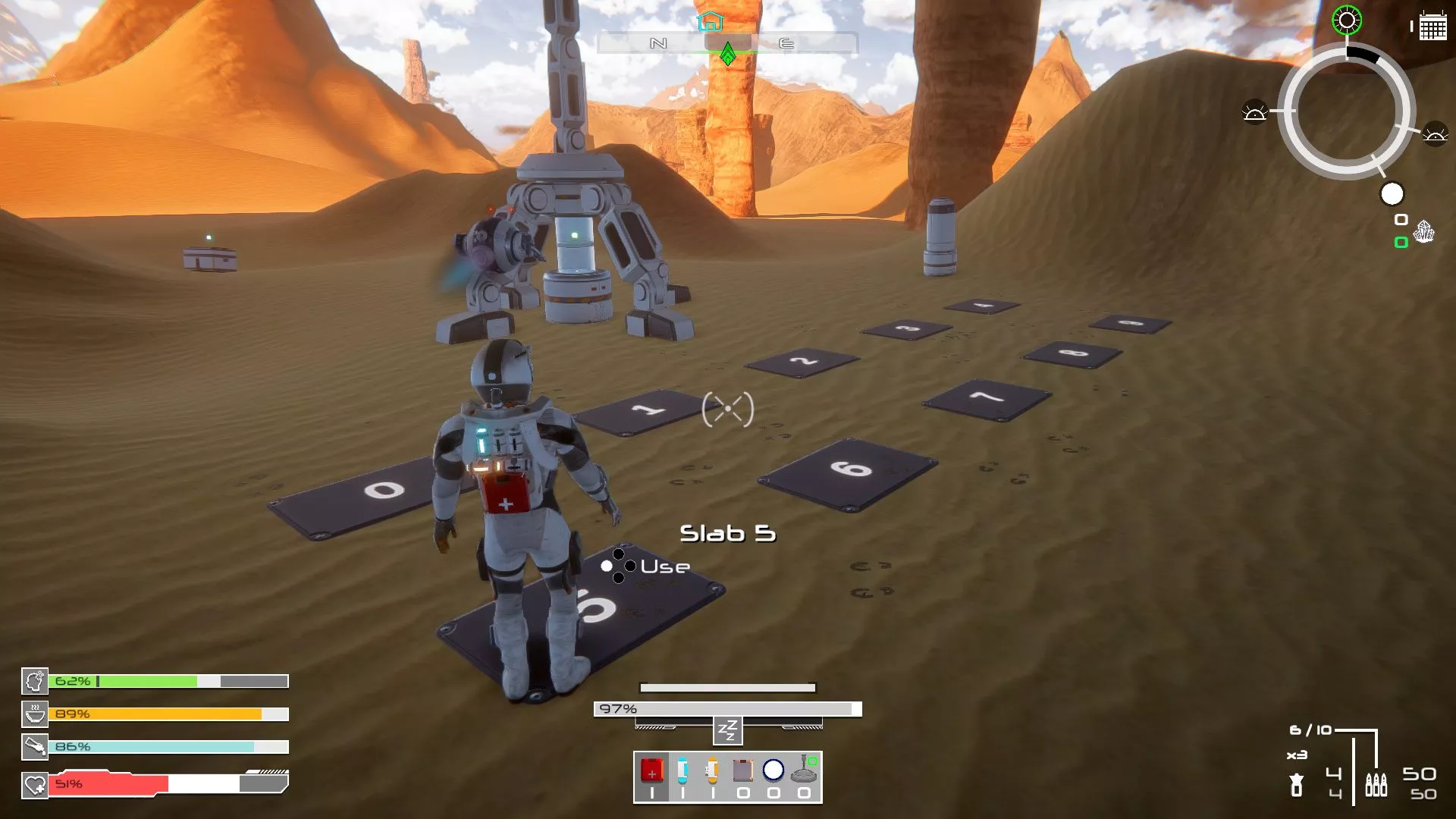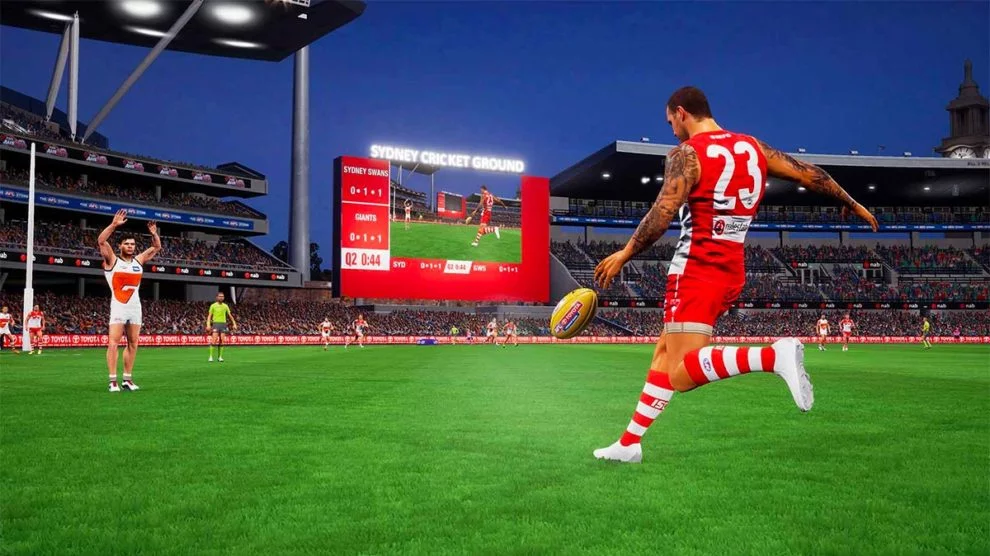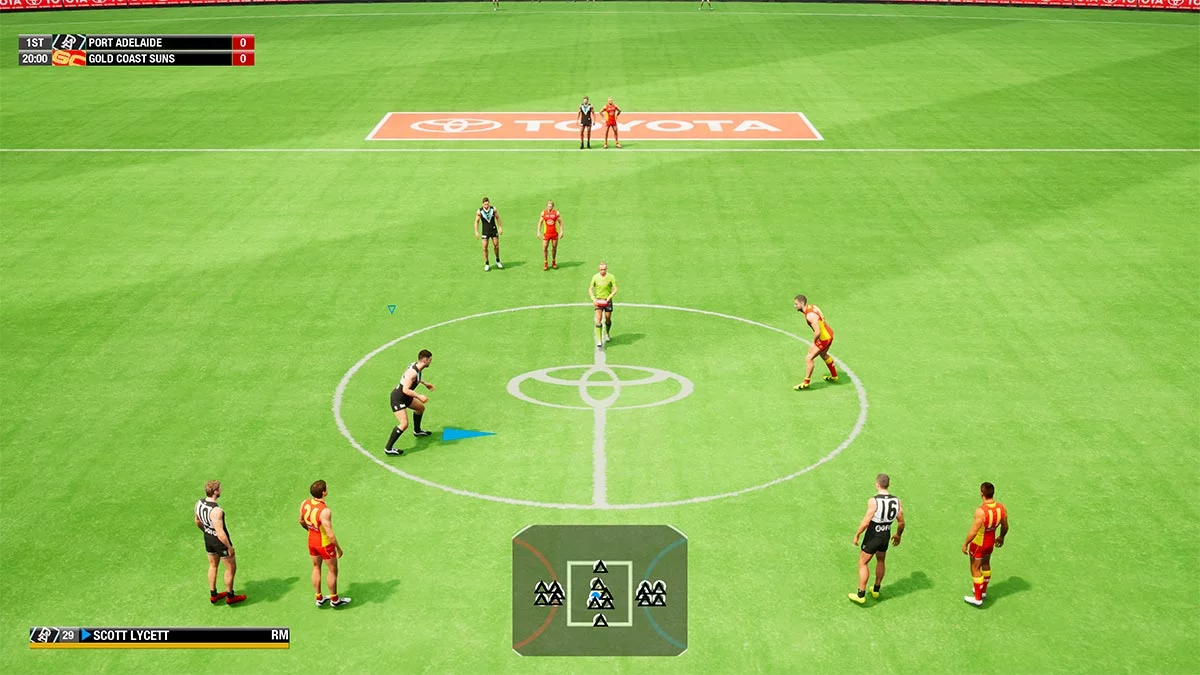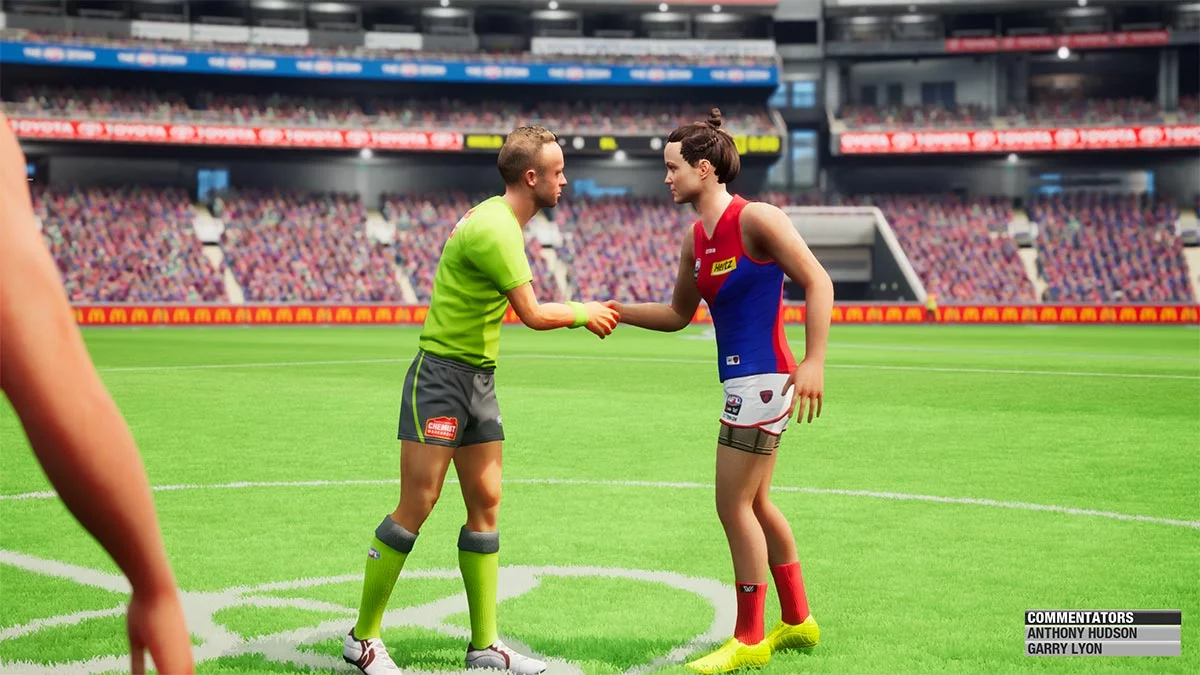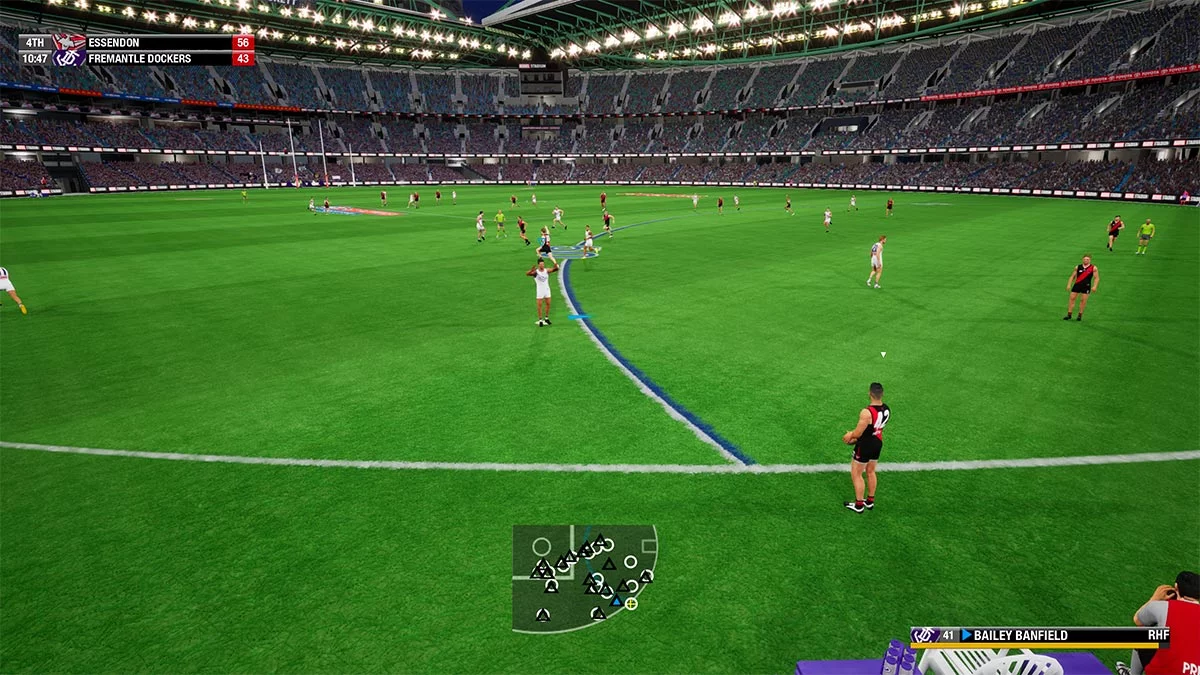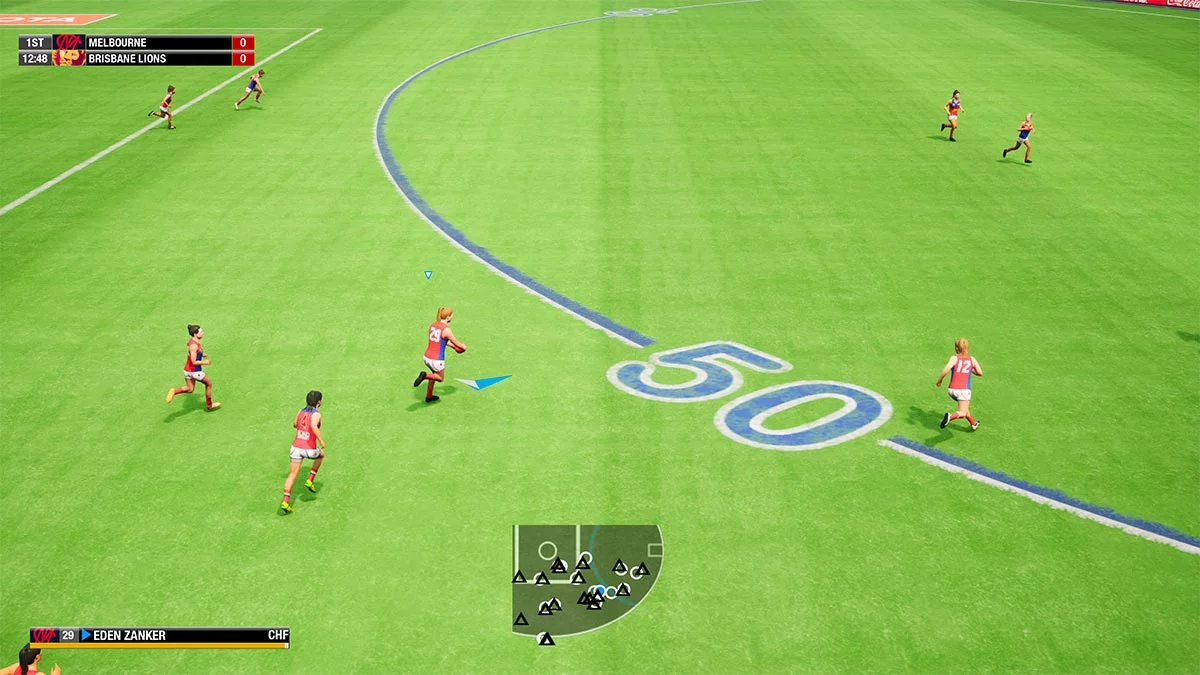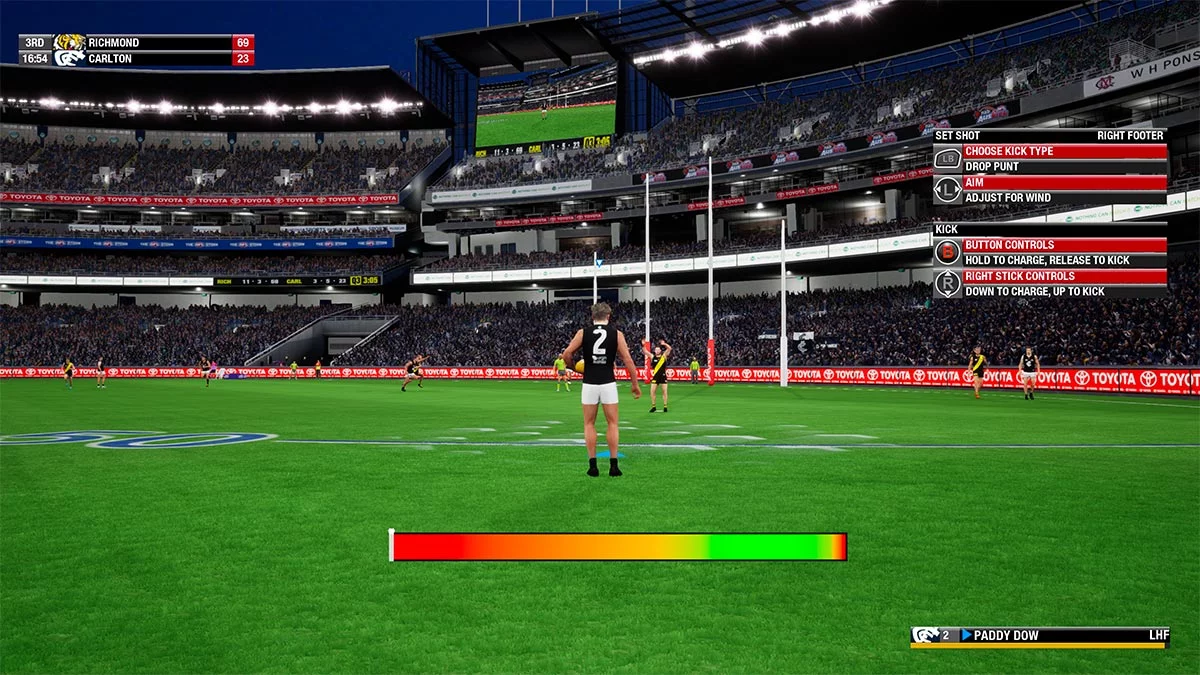Arriving amidst the chaos of an unprecedented indefinitely suspended AFL season, AFL Evolution 2 suddenly serves a much greater purpose than ever intended — it’s our only option, beyond Round 1, to get a footy fix in the 2020 premiership season. AFL Evolution 2 is functionality the same game as its predecessor, itself a rehash of the PS3/Xbox 360’s AFL Live 2 from 2013, and that set its foundations heavily upon the Wii’s AFL. Chalking up a fourth “new” release, Wicked Witch has gotten more alterations out of its ageing AFL game than Marge Simpson’s Pink Chanel Suit, and while it certainly feels like a dated last-generation game, Evolution 2 does a far better job of reflecting modern football than previous instalments.
Running through my 2017 AFL Evolution review, I’m reminded that this is the same game, but most of those major failings have been addressed. There are still some odd bugs and glitches, but they are nowhere near as prevalent this time around; but we would expect that, given the player base effectively tested it last time.
I was pleasantly surprised to find AFL Evolution 2 actually resembles a modern AFL match in motion, kind of, with more players around the ball and genuine movement in play. The stagnant positions are finally gone. Players won’t stand idly by in the forward pocket, and now move around the ground, which both congests the defensive 50 during a boundary throw-in and leaves plenty of room over the back for a fast break on the rebound. Player movement is still far from fluid, and there is some predicability to the more dynamic positioning, but at least they actually move around now, even if it’s still robotic and jerky.
It’s still a tackle-fest, but that’s been toned down to a degree, and so long as you can master the clunky controls, it’s now possible to break into space using handballs. With a dump kick option — which resolves the issue of not having time to charge a kick before being tackled but sacrifices accuracy — and the ability to queue handballs or kicks by pressing the button before taking clean possession, there are finally some options to get the ball moving amongst a pack of players.
It’s largely luck, as these options remove all semblance of ball control, but it’s better than ‘player 8’ running into open space after the other seven midfielders tackled each other and dropped out of the contest, as per the AFL Evolution playbook. It does create a new issue, in that if you choose to attempt any type of mark but don’t succeed, then pick up the ball, the player will execute the kick associated with that button instead — normally straight out of bounds.
That is also a side effect of the improved marking system that now places greater emphasis on player positioning and ability, rather than button timing and random luck — although there is still a strong element of that. With the ball incoming, the timing of your selection between attempting a mark, specie or spoil doesn’t matter — once a selection has been made, it’s getting into the centre of the white marking circle that counts. Marking was frankly horrible in AFL Evolution. In Evolution 2, stronger marking players have more of a chance of towering over the pack, and while it’s still not perfect, you actually have some control over getting into the best position to pluck the ball.
The smaller oddities in AFL Evolution have also mostly been addressed. The auto-interchange actually works this time around, and will move players around based on their recommended positions, so Eddie Betts won’t be sent to fullback anymore — and yes, players can automatically be split between the forwardline and midfield. The tactical options make little difference in actual play, but the ability to nominate a second ruckman and a player to take kick outs addresses the little oversights that make a big difference to anyone who knows football. Some of the player ratings will raise a few eyebrows, and several players are assigned to the wrong positions, but the community hub allows you to go in and edit those to match your own expectations — although we’re still stuck with Jack Watts’ weird fake tan that’s plagued his virtual career.
Rucking remains largely unchanged, as it has for years now, and still works well based on timing and input direction. Set shot goal kicking is familiar, but has been improved and is now much easier to master. The right stick can still be used, or alternatively the goal kick button can be used in conjunction with the goal kicking bar, with special kicks — snaps, bananas or torps — selected ahead of time. It’s a small tweak, but improves the best mechanic of the game. Goal kicking in general play is much harder, especially with the default side-on camera, so set shots inside 50 will generate the bulk of your scoring. It’s always been the pace and multi-directional nature of AFL that makes it so hard to adapt as a videogame. It’s no surprise the element most successfully converted is set shots, where the play stops and the camera can lock behind the goal-kicker for the duration of the play.
The Pro Career Mode is still pretty bland, but at least it actually works now. Choose to takeover an established player, create a rookie in the AFL, or go all the way back to the Under 18s and journey towards AFL Grand Final stardom. Choosing the latter fixes the unplayable Pro mode from the last game, and now allows a rookie kid to make meaningful contributions in a match — he’s no longer the worst player on the field. The Coach Career, however, is still where I expect most players to spend their time. After all, it’s the only place where history will record the original 23 round 2020 AFL home and away season, aside from outright setting up a single season.
There was set to be greater interaction with recent results, as AFL Evolution 2 had intended to allow reimagined real world games from the 2020 season in the AFL Game Day mode. Recent results should appear here, with the option to resume the match from any quarter, with the real world score, and recreate history. Hopefully that will be able to resume later in the year, but for now, it can only be trialled with Round 1.
The other mainstay for some players will be online play, but with few players online leading up to the primary digital release, we haven’t been able to find many games, and those we have played feel identical to the original AFL Evolution, which didn’t do enough to keep its playerbase engaged. Local multiplayer still suffers from the lack of a good camera angle — as does the entire game, to be honest. The side-on view, similar to soccer games, is the only fair option with multiple players, but you can’t really see where you’re kick the ball. I’ve found the dynamic camera to be the best playing solo, as most of the other ‘swinging behind the play’ options are too disorientating. This is a key factor in the struggle of AFL games. Even if they had a considerably largely budget, there’s no camera angle that does our 360 degree game justice.
The commentary is still stale and awkwardly robotic, but moderately less so, and the new dialogue recorded by Anthony Hudson and Garry Lyon at least freshen ups virtual Dennis Cometti’s tired one-liners he’s been rolling out since AFL Live 2004 and finally lets him enter retirement. The menus, which bog down the Career mode, could use a face lift, and there’s a lack of interactive tutorials for such a complicated game. The retail version actually comes with a 40-page printed manual explaining the controls, and then gives you nothing more than a freeplay mode to figure it out yourself.
What we have here is AFL Evolution with its biggest failings fixed and updated for the 2020 AFL season, also featuring current AFLW squads and all the state leagues. The core gameplay and clunky player movement remain, so it both looks and feels like a very old game, but the grave errors that plagued AFL Evolution have been rectified — it’s tactically much closer to modern AFL and fixes the small anomalies that are crucial to Australian rules football.
This is the game we should have received back then — and we still would have said gameplay is jittery, the camera options are inadequate, some animations are horrible and it looks like a relic from early last-generation — but at last there’s now been progress since the PS3 and Xbox 360 game it’s based upon.
Considering the climate in which it launches, AFL Evolution 2 has a much greater role to play this football season than the developers could ever have possibly imagined. There’s more fun to be had here than the past couple of games, and it feels like it’s been made with more passion, by AFL fans, for AFL fans who desperately want an AFL game to play. The unwaveringly serious supporters amongst them will still fume about the little discrepancies, but they are nowhere near as bad as last time, while general sport games enthusiasts will find it too clunky, unpolished and repetitive to carve out multiple seasons. However, if you’re part of the audience between them, those passionate enough to lead their club to the ultimate successful while also being able to overlook the missteps and quirks more acceptable a decade ago, AFL Evolution 2 will go a long way to tide you over until the real 2020 AFL season hopefully returns.
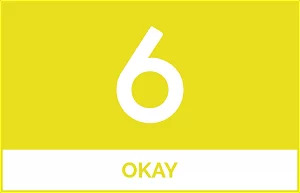 |
|
The good
|
The bad
|
AFL Evolution 2 was reviewed using a retail disc on Xbox One X, purchased by Stevivor. Click here to learn more about Stevivor’s scoring scale.
This article may contain affiliate links, meaning we could earn a small commission if you click-through and make a purchase. Stevivor is an independent outlet and our journalism is in no way influenced by any advertiser or commercial initiative.





